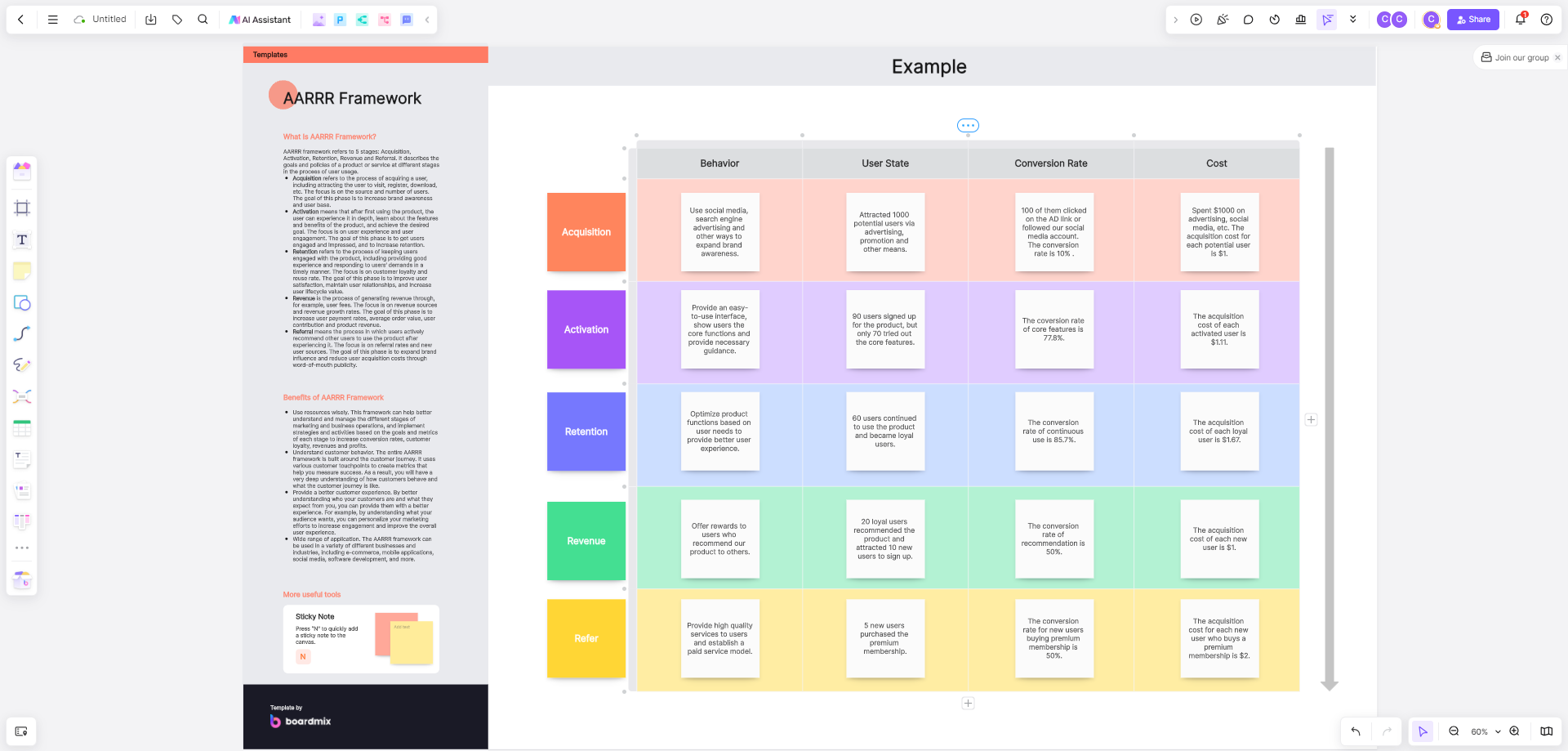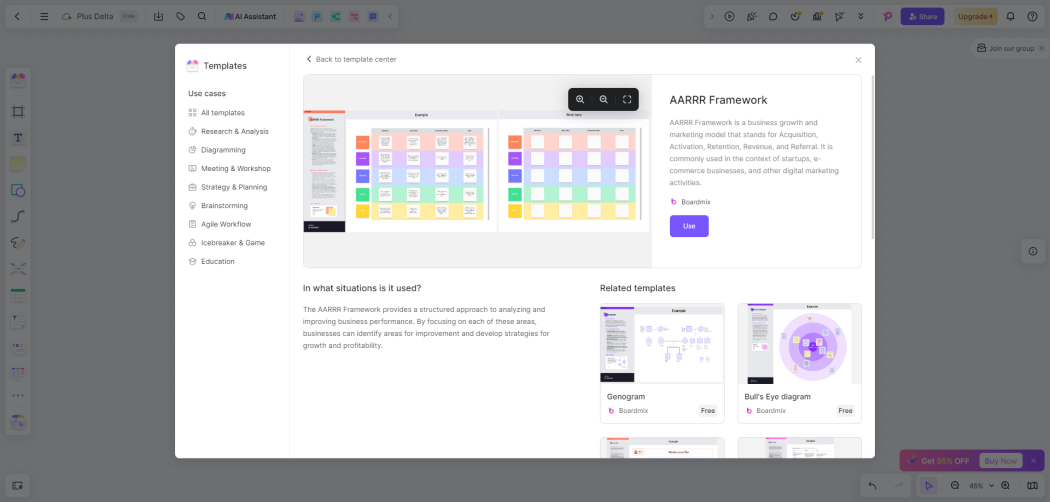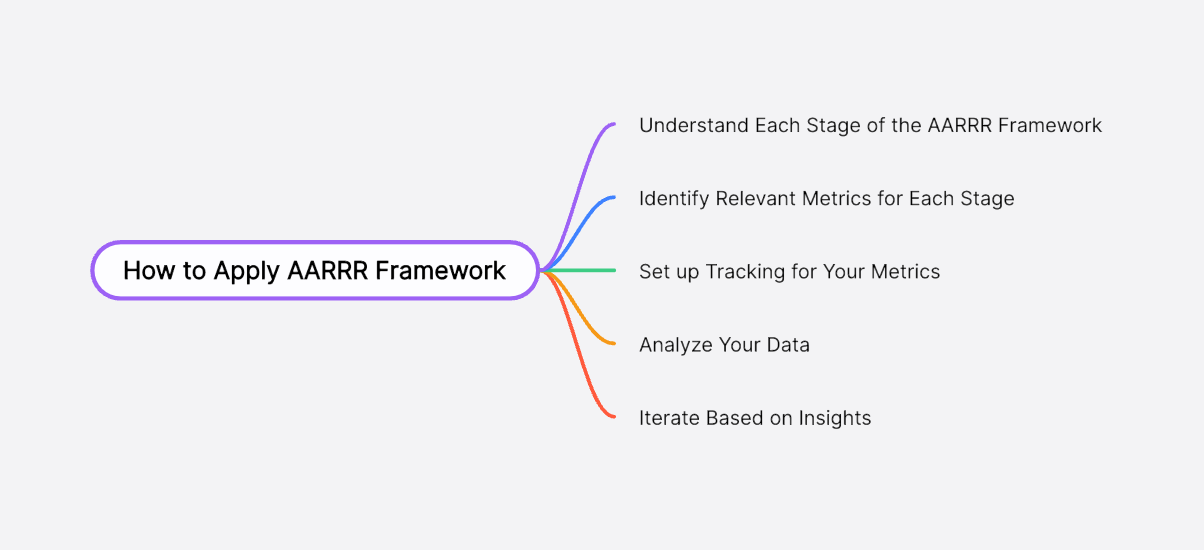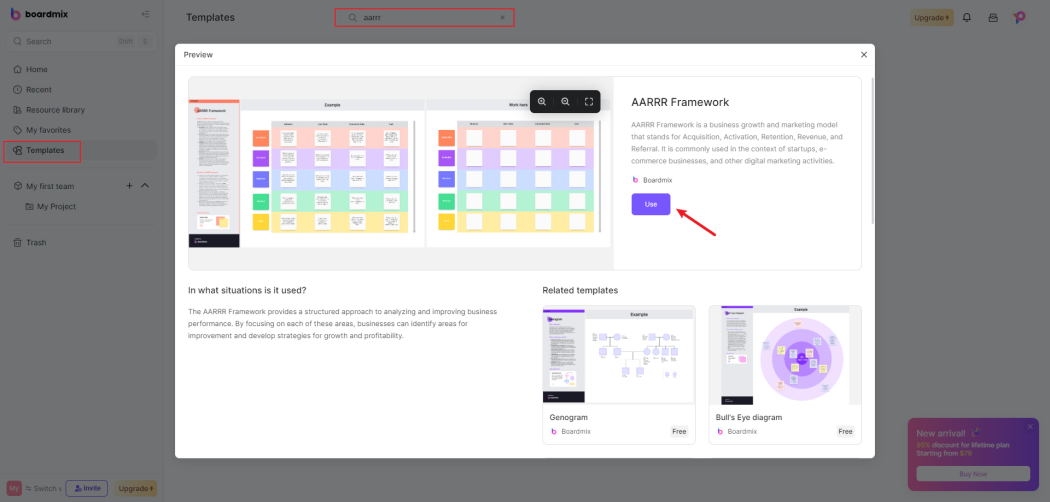The AARRR framework, also known as Pirate Matrix, has been a game-changer in how startups operationalize their growth strategy. It allows businesses to track and optimize their customer lifecycle from the point of user acquisition to retention. The AARRR Framework consists of five columns representing each stage of the user journey: Acquisition, Activation, Retention, Referral, and Revenue. Each column serves as a space to record and analyze data relevant to that stage. Let's delve deeper into each stage and understand the operational rules you should follow to successfully implement this model.
Operational Rules to AARRR Framework

Acquisition Operational Rules
- Focus on Relevant Channels: Concentrate your efforts on channels where your target audience is most active. Investing resources in irrelevant channels can lead to poor acquisition rates.
- Optimize for First Impressions: Your website or app's landing page should clearly communicate your value proposition and have a strong call-to-action.
- Track Conversion Matrix: Monitor matrix such as Cost per Acquisition (CPA), click-through rates (CTR), and conversion rates to measure the effectiveness of your acquisition efforts.
Activation Operational Rules
- Simplify Onboarding: A complex onboarding process can lead to drop-offs. Make it as straightforward and user-friendly as possible.
- Create an 'Aha!' Moment: Help users quickly find value in your product by guiding them towards key features or actions.
- Measure User Engagement: Use matrix like activation rate, time spent on app, or feature usage to gauge if users are truly engaged with your product.
Retention Operational Rules
- Prioritize User Experience: A seamless, enjoyable user experience can encourage users to keep coming back. Invest in UI/UX improvements and consistently test for usability issues.
- Implement Feedback Loops: Regularly collect user feedback to understand what they like or dislike about your product. Actively work on addressing their concerns.
- Track Churn Rate: A rising churn rate is a warning sign that users are not finding sustained value in your product. Monitor this metric closely and take remedial actions when necessary.
Referral Operational Rules
- Incentivize Referrals: Users are more likely to refer your product if there's something in it for them. Implement a referral program that offers incentives for each successful referral.
- Make Referrals Easy: The referral process should be quick and easy. Provide shareable links, referral codes, or one-click sharing options to streamline this process.
- Monitor Referral Matrix: Track the number of referrals, conversion rate of referred users, and the lifetime value of referred customers to evaluate your referral program's success.
Revenue Operational Rules
- Diversify Revenue Streams: Relying on a single revenue stream can be risky. Explore different monetization strategies like subscriptions, in-app purchases, advertising, etc.
- Optimize Pricing Strategy: Your pricing should strike a balance between being affordable for users and profitable for your business. Regularly review and optimize your pricing strategy based on market trends and user feedback.
- Track Revenue Matrix: Keep a close eye on matrix like Average Revenue Per User (ARPU), Lifetime Value (LTV), and monthly recurring revenue (MRR) to assess your revenue generation efficiency.
In essence, the AARRR metric model provides a systematic approach to understanding and enhancing your customer lifecycle. By following these operational rules at each stage, startups can ensure they are capturing maximum value from their user base and driving sustainable growth.

How to Apply AARRR Framework

Applying the AARRR framework, or Pirate Matrix, effectively can provide your startup with crucial insights into your customer lifecycle and drive sustainable growth. Here's a step-by-step guide on how to apply the AARRR metric model.
Step 1: Understand Each Stage of the AARRR Framework
Before you start applying the AARRR metric model, it's essential to understand what each stage—Acquisition, Activation, Retention, Referral, and Revenue—entails. Each stage represents a different aspect of the user journey, from the first interaction with your product to becoming a paying and loyal customer.
Step 2: Identify Relevant Matrix for Each Stage
After understanding each stage, the next step is to identify the relevant matrix you'll track for each one. For instance, at the Acquisition stage, some of the matrix you might track include website traffic, number of signups, or click-through rate. At the Revenue stage, you might measure average revenue per user or monthly recurring revenue.
Step 3: Set up Tracking for Your Matrix
Once you've identified the key matrix for each stage of the AARRR framework, it's time to set up tracking for these matrixes. This can involve implementing tracking code on your website or in your app, integrating with analytics tools, or setting up dashboards for visualizing data.
Step 4: Analyze Your Data
After setting up tracking, you'll start collecting data for your chosen matrix. The next step is to analyze this data to understand user behavior at each stage of the framework. For example, if your churn rate (a Retention metric) is high, it may indicate that users are not finding sustained value in your product.
Step 5: Iterate Based on Insights
The final step in applying the AARRR framework involves using the insights you've gained from your data analysis to make improvements. For instance, if your analysis shows that users are dropping off during onboarding (an Activation metric), you might decide to simplify your onboarding process.
Access Free AARRR Framework Template from Boardmix
BoardMix offers a variety of templates that enhance team productivity and foster collaboration, one of which is the AARRR Framework Template. It's free, easy-to-use, and fully customizable, making it a valuable tool for startups aiming to understand their user funnel better.
To access and make the most of this free template, just log into your BoardMix account, navigate to the 'Templates' section, and search for 'AARRR Framework' template.
BoardMix's AARRR Framework template isn't just for solo use; it's designed to facilitate team collaboration. You can invite your team members to join the board and contribute their ideas or findings. There are also built-in commenting and annotation features to promote dynamic discussions.
By continuously tracking, analyzing, and iterating based on these matrix, you can fine-tune your strategies at each stage of the user journey and drive growth for your startup. Remember that the goal is not just to move users through the funnel but to provide value at each stage that fosters user loyalty and advocacy.










